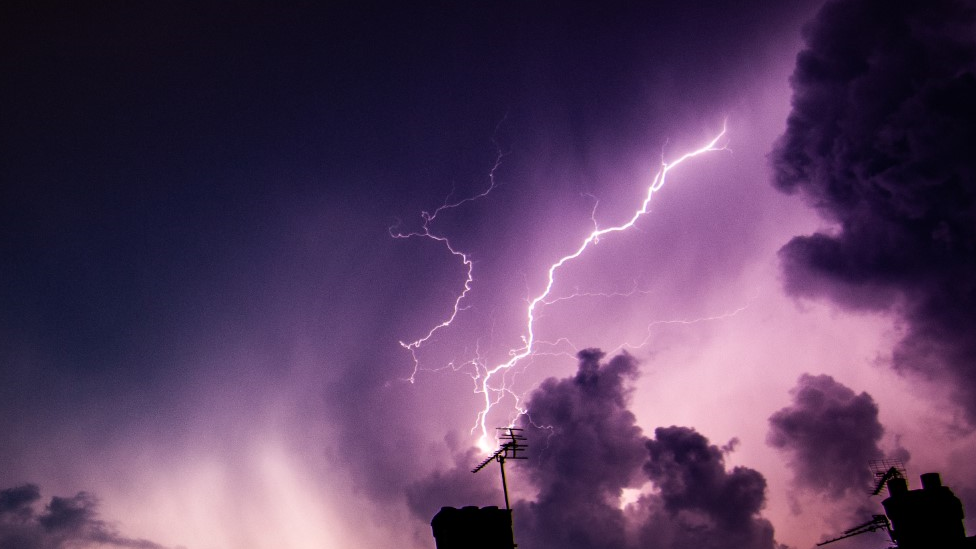Why do thunderstorms happen after hot weather?
- Published
- comments

Some places in the UK may see thunderstorms this week
Following last week's heatwave, thunderstorms and very heavy rain are forecast for many parts of England and Wales.
The Met Office - the UK's national weather service - issued yellow weather warnings for Tuesday and Wednesday with hail and lightning expected.
Weather forecasters warn the extreme weather could cause flooding in some areas and there may be disruption to travel, as well as power cuts.
So why do we get thunderstorms after hot weather? Read on to find out more.
How do thunderstorms form?
WATCH: 成人快手 weatherman Simon King explains how thunderstorms start
Thunderstorms start inside a cloud when it's high up in the atmosphere where the air is cooler than the air below it.
Bits of ice move up and down and bump into each other inside the cloud. This builds up an electric charge.
If the charge builds up enough it can suddenly flow as a huge current of electricity - either between the cloud and the ground, or between different clouds. We see this as a really big spark and it's what we call lightning.
When lightning happens, it heats the air to around 10,000掳C - that's around twice as hot as the temperature of the sun!
The air heats up so quickly that it suddenly creates a huge vibration in the air - which we hear as thunder.
Lightning and thunder happen at the same time. But because light travels around a million times faster than sound - you will see lightning before you hear thunder.
Why do thunderstorms happen after hot weather?
A picture of a thunderstorm cloud, also called cumulonimbus
Thunderstorms start with warm air. This typically occurs after long periods of warm weather - like a heatwave - when high temperatures that have heated the ground and the air.
The warm air rises in the atmosphere and then, as it gets higher, starts to cool and condense into water droplets.
These droplets starts moving in the cloud, and if the atmosphere is cold - they will start rising even further up into the atmosphere.
The atmosphere is unstable and thunderstorm clouds called cumulonimbus clouds are made, which are the only type of cloud that can produce hail, thunder and lightning.
